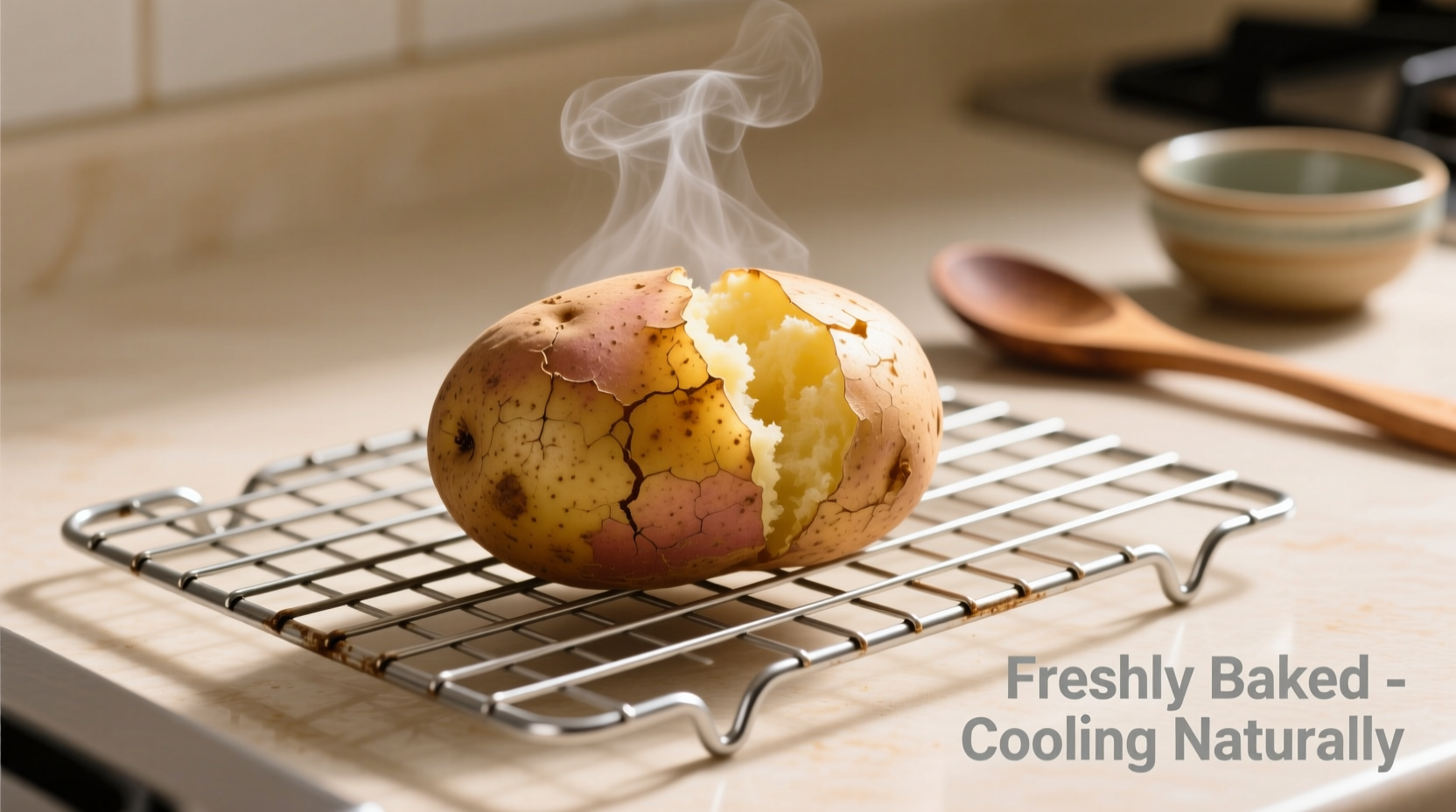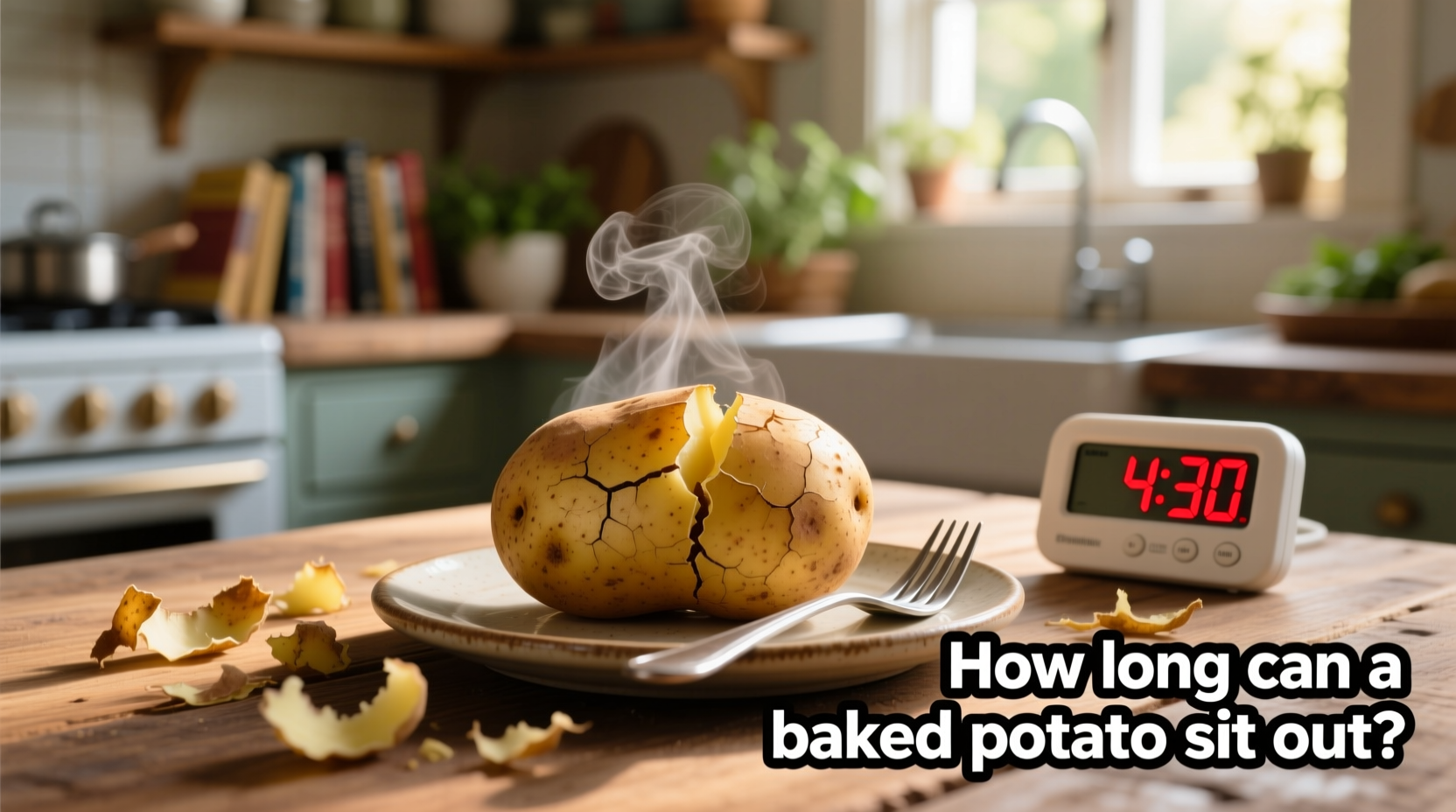When you pull that perfectly roasted potato from the oven, it's tempting to let it cool on the counter while you finish other dishes. But this simple decision could have serious consequences for your health. Understanding exactly how long a baked potato can safely sit out isn't just about preserving flavor—it's about preventing potentially dangerous foodborne illnesses.
The Science Behind Potato Safety
Potatoes become a breeding ground for harmful bacteria when left in the temperature danger zone (40°F to 140°F or 4°C to 60°C). Within this range, bacteria like Clostridium botulinum can multiply rapidly. Unlike many other vegetables, baked potatoes present unique risks because their moist interior creates an ideal anaerobic environment for bacteria growth, especially when wrapped in foil.
The USDA Food Safety and Inspection Service confirms that cooked foods like baked potatoes should not remain in the danger zone for more than two hours. This isn't merely a suggestion—it's based on extensive food safety research showing exponential bacterial growth during this timeframe.
| Temperature Condition | Maximum Safe Time | Recommended Action |
|---|---|---|
| Room temperature (below 90°F/32°C) | 2 hours | Refrigerate immediately after |
| Hot environment (above 90°F/32°C) | 1 hour | Cool rapidly and refrigerate |
| Refrigerated (40°F/4°C or below) | 3-4 days | Store in airtight container |
| Left unrefrigerated overnight | Unsafe | Discard immediately |
Why Baked Potatoes Pose Unique Risks
Unlike many other cooked foods, baked potatoes require special attention due to their specific characteristics. According to research published by the Centers for Disease Control and Prevention (CDC), baked potatoes wrapped in foil create a perfect anaerobic environment for C. botulinum spores to thrive. These spores naturally exist in soil and can contaminate potatoes during growth.
The FDA Food Code specifically addresses this concern, noting that "baked potatoes held without temperature control have been associated with several outbreaks of botulism." This isn't theoretical—real cases of food poisoning have occurred when people consumed potatoes left out too long, particularly when wrapped in foil which creates an oxygen-free environment where botulism bacteria flourish.

Practical Storage Solutions for Baked Potatoes
When you've finished baking your potatoes, follow these professional kitchen techniques to ensure safety:
- Immediate cooling: Place baked potatoes directly on a wire rack, not on a plate or in foil, to allow air circulation that speeds cooling
- Rapid refrigeration: Get potatoes into the refrigerator within the 2-hour window—don't let them cool completely on the counter
- Proper container: Store in an airtight container once cooled to prevent moisture loss and odor absorption
- Reheating safely: When reheating, ensure the internal temperature reaches 165°F (74°C) to kill any potential bacteria
Recognizing When a Potato Has Gone Bad
Even with proper handling, sometimes potatoes can spoil. Watch for these warning signs that indicate your baked potato should be discarded:
- Visible mold in any color (white, green, black)
- Unpleasant sour or rotten smell
- Slippery or slimy texture on the surface
- Unusual discoloration beyond normal browning
- Off taste (though you shouldn't risk tasting potentially contaminated food)
When in doubt, throw it out. The USDA emphasizes that "when it comes to food safety, there's no such thing as 'just a little bit' of risk." Better to waste a potato than risk serious illness.
Special Considerations for Stuffed Potatoes
Baked potatoes with fillings like cheese, sour cream, or meats have even shorter safe sitting times. Dairy and protein components accelerate bacterial growth. For stuffed potatoes:
- Add fillings only when ready to serve
- Store fillings separately until serving time
- Never leave stuffed potatoes at room temperature for more than 1 hour
- Refrigerate components separately for best results
Food Safety Myths About Potatoes
Several common misconceptions about potato safety persist. Let's clarify:
- Myth: "If it looks and smells fine, it's safe to eat" Fact: Harmful bacteria like C. botulinum don't always produce noticeable odors or visible changes
- Myth: "Reheating will kill all bacteria" Fact: While proper reheating kills bacteria, some bacteria produce heat-stable toxins that remain dangerous even after cooking
- Myth: "Potatoes are vegetables so they're less risky" Fact: The moist, starchy interior creates ideal bacterial growth conditions, making them higher risk than many other vegetables
Professional Kitchen Practices You Can Use at Home
Professional chefs follow strict protocols for potato safety that you can adapt for home use:
- Use a food thermometer to verify internal temperature when reheating (must reach 165°F/74°C)
- Divide large batches into smaller containers for faster, more even cooling
- Label containers with preparation date and discard after 4 days
- When serving at gatherings, use chafing dishes with heat sources or ice trays to maintain safe temperatures
Remember that food safety isn't about perfection—it's about managing risk. By understanding how long a baked potato can sit out safely and following these evidence-based guidelines, you protect yourself and others from preventable foodborne illness.











 浙公网安备
33010002000092号
浙公网安备
33010002000092号 浙B2-20120091-4
浙B2-20120091-4